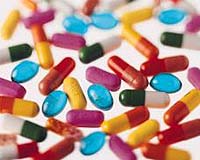 |
New York NY (SPX) Jun 12, 2009 An electronic diagnostic tool called the SmartPill is swallowed by patients in order to take measurements as it travels through the gastrointestinal tract. A new study by physician-scientists at NewYork-Presbyterian/Weill Cornell Medical Center used the device in patients with mild to moderate ulcerative colitis (UC), determining that they have significantly more acidic pH in their colons, compared with the average person - a finding that may impact treatment strategy. The study was presented at the Digestive Disease Week (DDW) meeting in Chicago, Ill. "By using the SmartPill to measure the pH throughout the digestive tract, we were able to see how the pH levels can vary in patients with ulcerative colitis. This may help us understand why some drug treatments are more effective than others," says Dr. Brian Bosworth, lead investigator, assistant professor of medicine at Weill Cornell Medical College, and a Crohn's and colitis specialist at the Jill Roberts Center for Inflammatory Bowel Diseases at NewYork-Presbyterian Hospital/Weill Cornell Medical Center. Mesalamines are the mainstay drug therapy for the induction and maintenance of remission in patients with mild to moderate UC. Their efficacy is dependent on how well the drug is delivered to the active site of the disease. Several mesalamines have a delivery system that is dependent upon a specific pH in order to release. However, since the pH levels in the GI tract can vary, the researchers say, this could impact the proper release and efficacy of the medication. In the study, five patients with mild to moderate ulcerative colitis (UC) and five healthy control patients swallowed the SmartPill. While all study participants reached a pH of 7, the UC patients reached this level more slowly than those without UC. Furthermore, the amount of time the colon maintained a pH greater than 6 or greater than 7 was less in the UC patients. The majority of mesalamines dissolve at a pH greater than or equal to 7, however, there is a more recently approved medication that initiates release of mesalamine at pH greater than or equal to 6. Administered in the physician's office, the SmartPill allows that patient to go about their normal routine during the course of the test. As the SmartPill Capsule passes through the GI tract, it transmits data - including pressure, pH and temperature - to a SmartPill Data Receiver worn by the patient. Once the single-use capsule has passed from the body, the patient returns the Data Receiver to the physician who then can download the collected data to a computer, where it can be analyzed. The study's co-authors include Drs. Douglas M. Weine and Ellen J. Scherl of NewYork-Presbyterian Hospital/Weill Cornell Medical Center, and Michelle Cohen of the Albert Einstein College of Medicine, Bronx, N.Y. Share This Article With Planet Earth
Related Links NewYork-Presbyterian Hospital Weill Cornell Medical Center Hospital and Medical News at InternDaily.com
 China defends safety of drug exports
China defends safety of drug exportsBeijing (AFP) May 26, 2009 Chinese pharmaceutical exports are safe, a senior official said Tuesday, dismissing media reports that the country was a major exporter of fake or shoddy drugs as "sensational." "I cannot agree with some foreign media allegations that China has become a major exporter of fake drugs," Bian Zhenjia, deputy commissioner of the State Food and Drug Administration (SFDA), told reporters. ... read more |
|
| The content herein, unless otherwise known to be public domain, are Copyright 1995-2009 - SpaceDaily. AFP and UPI Wire Stories are copyright Agence France-Presse and United Press International. ESA Portal Reports are copyright European Space Agency. All NASA sourced material is public domain. Additional copyrights may apply in whole or part to other bona fide parties. Advertising does not imply endorsement,agreement or approval of any opinions, statements or information provided by SpaceDaily on any Web page published or hosted by SpaceDaily. Privacy Statement |